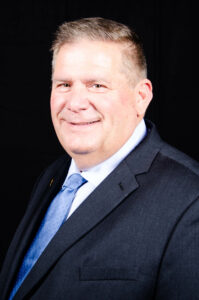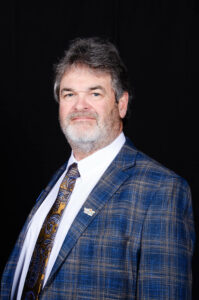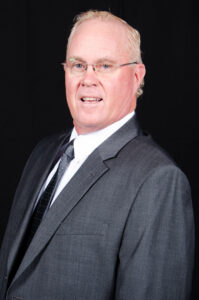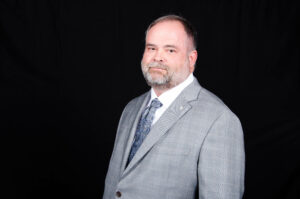The National Agricultural Aviation Association is pleased to announce its 2024 officer team, led by NAAA President Ray Newcomb. Serving alongside Newcomb are Vice President Glenn Holloway, Secretary Joel Meyer and Treasurer Matt Woolard.
President Ray Newcomb (New Hampshire)

2024 NAAA President Ray Newcomb owns JBI Helicopter Services in Pembroke, New Hampshire. He served as treasurer in 2023 and secretary in 2022 and has also been active in chairing committees including Budget & Finance Committee Chairman in 2023, Governing Documents Committee Chairman in 2022 and Vice Chairman in 2020 and 2021 and Government Relations Vice Chairman in 2022.
JBI Helicopter Services has 97 employees and 20 aircraft. Ray soloed at 16 years old and earned his CFI in college. He attended college and taught as a flight instructor at Hawthorne College in Antrim, NH. He worked with the college his senior year to establish a ground school where he taught students airport rules, aircraft instruments, weather and other key subjects related to flight. The school gave him an award for establishing the ground school at his 1983 graduation.
Ray was hired by Joe Brigham in November of 1983 and conducted powerline patrol work and external load work, including cranberry bog work in a Bell 206B Jet Ranger. In 1985 Ray earned his A&P certification and officially started to conduct agricultural aerial applications. Ray purchased the company in 1995. Ray’s wife Donna handles the books and runs many of the business’s internal operations. Sons Sean and Craig are also involved in the business with Sean conducting helicopter work and Craig has a goal to begin ag spraying later this year.
The lion’s share of JBI’s work is agricultural, about 48% of its total work. They also treat forest land, and the company continues to conduct powerline patrol services and external load transporting. The company treats 410,000 acres a year in 32 states from Maine to Washington state, however most of its work is conducted between Texas and Ohio where they apply to approximately 280,000 acres a year of corn with fungicide, primarily in Iowa, Kentucky, and Ohio. Soybeans are also part of the mix in that area. In parts of Connecticut and largely in Massachusetts’ Cape Cod area, JBI treats 14,000 acres of cranberries by air applying insecticides, fungicides, and fertilizer.
Ray looks forward to communicating the many benefits NAAA provides to the industry and the general public in regard to education. “People have a right to know what we’re doing just as I have a right to do what I’m doing,” said Ray. He believes that publicly addressing people’s concerns has been a benefit of paramount importance to the work of aerial applicators. “Educating the public is a big thing. They understand our importance once it’s been explained to them.”
Ray and his company have a strong focus on safety. In fact, he brought the Flying in the Wire and Obstruction Environment course, that has been taught at the past two NAAA annual conventions, to the attention of NAAA. All of JBI’s aircraft have GPS, ADS-B In/Out, tracking devices so headquarters knows where the fleet is at all times and many helicopters include a synthetic vision system that uses 3D imaging to provide pilots with clean and intuitive means of understating their flying environment and audio warnings when terrain is close.
Vice President Glenn Holloway (Mississippi)

Glenn Holloway of Holloway Air Service in Merigold, Mississippi is NAAA’s 2024 Vice President. He has been a member of NAAA since the early 1990s and began serving on the NAAA Board of Directors in 2019. He also attended the NAAA/Syngenta Leadership Training Program in 2003. Glenn is heavily involved in the National Agricultural Aviation Museum in Jackson, Mississippi and chaired the NAAA Museum Committee. He has also chaired the NAAA Precision Agriculture and Safety and Federal Aviation Regulations Committees.
Glenn didn’t grow up in the aerial application industry, but he quickly found the passion of being an ag pilot and has never looked back. In his college years, Glenn worked for a farmer while attending Delta State University, where he earned a double major in chemistry and biology; he originally wanted to be a pharmacist. He began loading for the ag pilot that his farmer-employer had hired and in 1981, he decided to take flying lessons after being intrigued with the crop-dusting industry. Glenn loaded for several operators, earned his private and commercial licenses, and flew his first crops in 1986. From that moment, he was hooked.
Early in his career, Glenn became involved in the Mississippi Agricultural Aviation Association (MAAA). He has been a member of MAAA since the mid-1980s and NAAA since the early 1990s. He held every officer position in his state association. He also attended the NAAA/Syngenta Leadership Training Program in 2003. In 2019 he became a member of the NAAA Board. Glenn is also heavily involved in the National Agricultural Aviation Museum in Jackson, Mississippi and chaired the NAAA’s Museum Committee. He also chairs NAAA’s Precision Agriculture and Safety and Federal Aviation Regulations Committee. Now it’s only fitting that he will now add another bullet point to his industry resume as the 2024 NAAA Vice President.
Glenn looks forward to being more involved in the legislation process on the state and federal level to continue to make the industry safer for ag pilots. “In the state of Mississippi, ag pilots have been lobbying state legislators that any company that plans to erect a tower under 200 feet is required to contact the Mississippi Agricultural Aviation Association about the towers so that ag pilots can be alerted about the tower,” he stated. “We spray fields anywhere from 8-12 times per year, so we have a lot of exposure to towers in the fields. I want everyone to be safe, survive, and have integrity to move forward in the right way and help the industry progress in the future.”
These days, Glenn considers himself more of a consultant because he conducts aerial application contract work for several operators. He and his oldest son own their current operation, but his son runs and manages the business. Glenn currently flies an Air Tractor 602 but has also flown many other ag aircraft including Thrush, Ag Cats and Cessnas. He mostly sprays cotton, rice, soybeans, some corn and at times, wheat.
Secretary Joel Meyer (Iowa)

NAAA’s 2024 Secretary is Joel Meyer of Meyer Agri-Air in Wellsburg, Iowa. He has been a member of NAAA since 1998 and began serving on the NAAA Board of Directors in 2022. Joel has served on the NAAA Awards, Convention, Governing Documents, Government Relations and Precision Agriculture Committees.
Joel grew up on a dairy farm and at a young age, he was introduced to an array of farm chores and responsibilities. And he feels that he is the person today because of that hard work and his parents. He was also involved in 4-H and Future Farmers of America. When there were never-ending farm chores his dad would say, “there is a mountain, and you start with one shovel at a time.” Joel chose not to take the route of dairy farmer as a career because the mountain looked bigger than his shovel could handle. Those early mornings on the dairy farm prepared him for the early mornings as an ag pilot and operator.
After high school, Joel planned on attending an aviation program, but the school over-enrolled and he had to wait a few years. His flying career began in 1988 as a small aircraft commuter pilot, but he knew that wasn’t the route he wanted for his flying career. After realizing that he could combine his love of flying with the agriculture industry he was raised in, he attended an ag aviation school in Alabama. Joel said he initially felt out of place because he already had an Airline Transport Pilot (ATP) license and others were just beginning to work on their commercial license. However, it was the right decision because going to the ag program helped him receive insurance.
Joel started his first season of ag flying in 1994 and purchased a Pawnee 260D, which he flew for two years. He began spraying for a seed corn company and realized he needed a larger airplane and purchased a 1996 Weatherly, which he flew until 2004. In 2005, when the fungicide applications to commercial corn as a growing market, he purchased an Air Tractor 502 and hired his first pilot. Today, Joel has nine aircraft; two Air Tractor 502s and seven Air Tractor 602s, as well as a Bell 206 L-3 LongRanger helicopter, to work in fields that are more challenging for the larger airplanes. At his busiest point in the season, Joel employees almost 50 people. Most of his pilots work in other areas of the U.S. during other regions’ busy seasons and he also employs an airline and corporate pilot for the busy season in Iowa. His operation treats commercial corn, commercial soybeans, seed corn and seed beans. They have been seeding cover crops by air for many years.
In his role as secretary, he wants to make sure that ag pilots understand the importance of membership. “NAAA membership shows my employees and neighbors that I belong to an association that adopts the same principles and best practices that I have for my business. NAAA does a lot of good for our industry and for our businesses,” stated Joel.
Joel is also focused on pilot safety. “The windfarms are populating several fields and they’re not laid out in a safe manner for our pilots or to complete a satisfactory job for our customers. Farmers are planting crops up to the edge of town where we can’t treat their crops with an airplane, so we added a helicopter to our fleet, which has been a great tool.”
Treasurer Matt Woolard (Arkansas)

Matt Woolard of Woolard Flying Service in Corning, Arkansas is NAAA’s 2024 treasurer. Matt is heavily involved in the National Agricultural Aviation Museum in Jackson, Mississippi and is chairman of the NAAA Museum Committee. He has also served on NAAA’s Communications & PR, Government Relations, Precision Agriculture and Safety & Federal Aviation Regulations Committees. He will chair the NAAA Budget and Finance Committee later this year.
Matt’s interest in the aerial application industry started like many other pilots; from seeing planes flying through farm fields. He was born and raised in northeast Arkansas in a farming family and fell in love with the aircraft that treated crops. His father-in-law owned an aerial application flying service and Matt went to work for him in 1997. At first, he worked as a mechanic earning his A&P. He eventually also earned his pilot’s license and began treating crops in 2004. Sadly, shortly after this, his father-in-law began to battle some health issues and Matt began transitioning out of the cockpit and into the scheduling role. In 2015, he and his wife Cindy purchased the spraying business. He still occasionally flies ag, but he has become the brain hub of his operation, focusing on logistics and ensuring that everyone is where they are supposed to be.
Matt’s operation treats around 80,000 acres per year of mostly rice and soybeans. Their busiest part of the season is mid-May to mid-June and his operation employs one full-time pilot and a second part-time pilot. They fly an Air Tractor 802 and 502. Most of their work is fertilizing and the capacity of the AT-802 makes it a necessity to get the large volume of the work done in a timely fashion. When spraying begins to slow down in the fall, Matt gets back to his roots where he helps his younger brother tend to their fourth-generation family farm, which is about 2,600 acres in Clay County, AR and they farm rice, soybeans, and corn.
Matt is excited about his new board position, stating, “Being asked to serve as Treasurer is an honor that I am thought of enough by the members to represent the association. I intend to serve to the standards that I would like to see the association represented.” In his role as treasurer, Matt wants to ensure that ag pilots stay safe from uncrewed aircraft. “Many drones are small, and we cannot see them when we are flying; we need to continue to ensure the safety of our pilots from drones as a top priority,” stated Matt “I look forward to championing our industry and being a voice for our industry.”
Strength in Numbers: Join NAAA
NAAA is fortunate to have a dedicated group of officers and volunteer leaders serving on its board of directors, but there is also strength in numbers. If you aren’t a member, the single-most effective way you can address the range of critical issues facing your business is by joining NAAA. The payoff far exceeds what you will spend in dues in the form of effective advocacy, national representation, education and safety programs and the personal connections you will make as you participate in association activities. To join, call (202) 546-5722 or visit AgAviation.org/membership.





